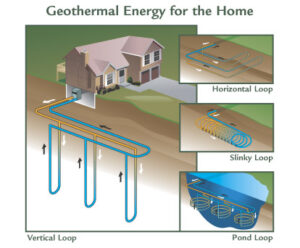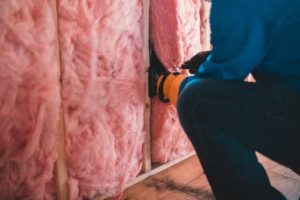As more Americans develop allergies of some kind, it becomes increasingly important to ensure that you can control the amount of pollutants you come into contact with. While you can’t control the outside environment, you are still able to improve home air quality in a meaningful way. This post will cover a few ways in which homeowners can dramatically decrease the levels of air pollution in their homes.

Improve Home Air Quality
Improving the air quality inside your home can benefit those suffering from various allergies and contribute to a far more comfortable living environment. Let’s look at the three biggest ways you can make that happen and reduce indoor air pollution.
1. Regularly Change Air Filters
If your home has an HVAC system, then count yourself lucky since these systems are pretty amazing at drawing in and filtering the outside air to create a far more pleasant experience than you would otherwise have without the system. However, as is the case with many things, if you neglect it and fail to keep it well-maintained, the benefits you usually see from it will slowly dissipate.
One of the more straightforward and affordable options to improve home air quality is to regularly change the furnace filters used throughout a system like this. This will ensure that contaminated air passes through it; it will exit into your home minus almost all of the usual nasties, keeping your allergies at bay and your home feeling fresher.

2. Invest in an Air Purifier
The more common sources of indoor air pollution include dust, mold, pet dander, smoke, cleaning products, and random organic compounds emitted from building materials. While you can’t avoid many of these things, you can reduce the impact they have by investing in a high-quality air purifier (the key term being high-quality since cheaper models are often less effective).
An air purifier can effectively remove pollutants from indoor air, protecting you from health risks. Opt for a HEPA filter, as these capture at least 99.97% of airborne particles 0.3 microns in size. Look for a unit suited to the size of your room, and consider additional features like activated carbon filters that trap gases and odors. However, just as with the previous point, you need to ensure that you stay on top of maintenance, which in this case means regularly changing the filters as per the model instructions.
3. Keep Humidity Levels Balanced
Maintaining balanced humidity levels is another important factor in improving indoor air quality since both very low and very high humidity can worsen respiratory problems and increase health risks. When air is too dry, particles that would otherwise be too heavy to remain airborne can become resuspended. This includes dust mites, pollen, mold spores, and other allergens that irritate breathing passages.
On the other hand, high humidity levels provide the perfect environment for dust mites, mold, and mildew to thrive. Using a hygrometer, homeowners can monitor the indoor relative humidity, which should be kept between 30-50% for optimal health. A dehumidifier helps regulate humidity in damp conditions, while a humidifier adds moisture to dry indoor air in winter. Proper ventilation also removes excess moisture from indoor air. Balancing humidity makes indoor allergens and pollutants less likely to circulate, improving lung health and comfort for all occupants.
The quality of the air inside your house should be pretty high in terms of your priorities since poor air quality can lead to all sorts of health issues. By utilizing the ideas in this post, you can be sure to improve home air quality and make it a charming place to be!



